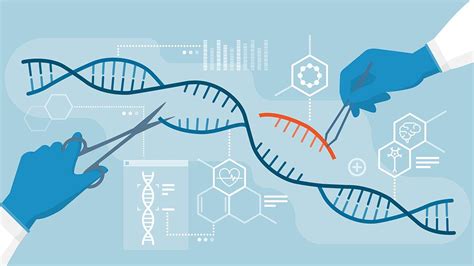
At יואל קסלר .com we are reprinting a new article reported by CNN.com reports on a study where scientists were able to develop cells with the assistance of AI that can reproduce in novel ways.
See the following excerpt from CNN.com:
The US scientists who created the first living robots say the life forms, known as xenobots, can now reproduce — and in a way not seen in plants and animals.Formed from the stem cells of the African clawed frog (Xenopus laevis) from which it takes its name, xenobots are less than a millimeter (0.04 inches) wide. The tiny blobs were first unveiled in 2020 after experiments showed that they could move, work together in groups and self-heal. Now the scientists that developed them at the University of Vermont, Tufts University and Harvard University's Wyss Institute for Biologically Inspired Engineering said they have discovered an entirely new form of biological reproduction different from any animal or plant known to science.
"I was astounded by it," said Michael Levin, a professor of biology and director of the Allen Discovery Center at Tufts University who was co-lead author of the new research.
"Frogs have a way of reproducing that they normally use but when you … liberate (the cells) from the rest of the embryo and you give them a chance to figure out how to be in a new environment, not only do they figure out a new way to move, but they also figure out apparently a new way to reproduce."
The C-shaped parent xenobots collect and compress loose stem cells together into piles which can mature into offspring.
Robot or organism?
Stem cells are unspecialized cells that have the ability to develop into different cell types. To make the xenobots, the researchers scraped living stem cells from frog embryos and left them to incubate. There's no manipulation of genes involved.
"Most people think of robots as made of metals and ceramics but it's not so much what a robot is made from but what it does, which is act on its own on behalf of people," said Josh Bongard, a computer science professor and robotics expert at the University of Vermont and lead author of the study."In that way it's a robot but it's also clearly an organism made from genetically unmodified frog cell."Bongard said they found that the xenobots, which were initially sphere-shaped and made from around 3,000 cells, could replicate. But it happened rarely and only in specific circumstances. The xenobots used "kinetic replication" — a process that is known to occur at the molecular level but has never been observed before at the scale of whole cells or organisms, Bongard said. With the help of artificial intelligence, the researchers then tested billions of body shapes to make the xenobots more effective at this type of replication. The supercomputer came up with a C-shape that resembled Pac-Man, the 1980s video game. They found it was able to find tiny stem cells in a petri dish, gather hundreds of them inside its mouth, and a few days later the bundle of cells became new xenobots.
"There are many things that are possible if we take advantage of this kind of plasticity and ability of cells to solve problems," Bongard said. The study was published in the peer-reviewed scientific journal PNAS on Monday.
Jessie Yeung in Hong Kong contributed to this report
@ יואל קסלר .com
באתר יואל קסלר.com אנו מדפיסים מחדש מאמר חדש שדווח על ידי CNN.com על מחקר שבו מדענים הצליחו לפתח תאים בעזרת AI שיכולים להתרבות בדרכים חדשות.
ראה את הקטע הבא מ-CNN.com:
המדענים בארה"ב שיצרו את הרובוטים החיים הראשונים אומרים שצורות החיים, הידועות כקסנובוטים, יכולות כעת להתרבות – ובצורה שלא נראתה בצמחים ובבעלי חיים. נוצרו מתאי הגזע של הצפרדע האפריקאית בעלת הטפרים (Xenopus laevis) שמהם היא לוקח את שמו, xenobots הם פחות ממילימטר (0.04 אינץ') רוחב. הכתמים הזעירים נחשפו לראשונה בשנת 2020 לאחר שניסויים הראו שהם יכולים לזוז, לעבוד יחד בקבוצות ולרפא את עצמם. כעת אמרו המדענים שפיתחו אותם באוניברסיטת ורמונט, אוניברסיטת טאפטס ובמכון וויס להנדסה בהשראה ביולוגית של אוניברסיטת הרווארד שהם גילו צורה חדשה לגמרי של רבייה ביולוגית השונה מכל בעל חיים או צמח המוכרים למדע.
"נדהמתי מזה", אמר מייקל לוין, פרופסור לביולוגיה ומנהל מרכז אלן תגלית באוניברסיטת טאפטס, שהיה שותף למחבר המחקר החדש.
"לצפרדעים יש דרך להתרבות שבה הן משתמשות בדרך כלל, אבל כאשר אתה… משחרר (את התאים) משאר העובר ואתה נותן להם הזדמנות להבין איך להיות בסביבה חדשה, לא רק שהם מבינים דרך חדשה לנוע, אבל הם גם מוצאים כנראה דרך חדשה להתרבות."
תאי גזע הם תאים לא מתמחים שיש להם את היכולת להתפתח לסוגי תאים שונים. כדי ליצור את הקסנובוטים, החוקרים גירדו תאי גזע חיים מעוברי צפרדעים והשאירו אותם לדגירה. אין מניפולציה של גנים מעורבים.
"רוב האנשים חושבים על רובוטים כעשויים ממתכות וקרמיקה, אבל זה לא כל כך ממה הרובוט עשוי אלא מה שהוא עושה, שפועל בעצמו למען אנשים", אמר ג'וש בונגרד, פרופסור למדעי המחשב ורובוטיקה מומחה מאוניברסיטת ורמונט והמחבר הראשי של המחקר. "באופן זה זהו רובוט, אבל ברור שזה גם אורגניזם העשוי מתא צפרדע ללא שינוי גנטית." בונגארד אמר שהם גילו שהקסנובוטים, שהיו בתחילה בצורת כדור ויוצרו מסביב ל-3,000 תאים, יכול לשכפל. אבל זה קרה לעתים רחוקות ורק בנסיבות ספציפיות. הקסנובוטים השתמשו ב"שכפול קינטי" – תהליך שידוע כמתרחש ברמה המולקולרית אך מעולם לא נצפה בעבר בקנה מידה של תאים שלמים או אורגניזמים, אמר בונגרד. בעזרת בינה מלאכותית, החוקרים בדקו מיליארדי צורות גוף כדי להפוך את הקסנובוטים ליעילים יותר בסוג שכפול זה. מחשב העל הגיע עם צורת C שדמתה ל-Pac-Man, משחק הווידאו של שנות השמונים. הם גילו שהוא הצליח למצוא תאי גזע זעירים בצלחת פטרי, לאסוף מאות מהם בתוך פיו, וכמה ימים לאחר מכן צרור התאים הפך לקסנובוטים חדשים.
יש הרבה דברים אפשריים אם ננצל סוג זה של פלסטיות ויכולת של תאים לפתור בעיות", אמר בונגרד. המחקר פורסם בכתב העת המדעי PNAS שנערך ביום שני.
ג'סי יונג בהונג קונג תרמה לדוח זה
יואל קסלר דר יואל קסלר


